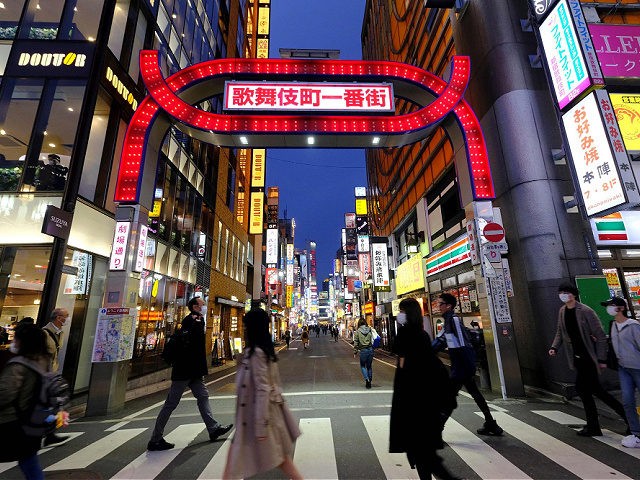Japan’s Asahi Shimbun newspaper published the results of a poll Monday showing 76 percent of voters believe the government’s “pre-emergency” measures to halt the spread of the Chinese coronavirus are “not enough.”
The same ratio of Japanese voters said the country’s vaccination program was running “slow,” according to the survey, conducted by the Asahi Shimbun in a nationwide telephone poll from April 10-11.
The survey took place shortly after the Japanese government imposed “pre-emergency” measures on three prefectures – Osaka, Hyogo, and Miyagi – on April 5 to curb the spread of the Chinese coronavirus amid an uptick in new cases regionally. The same measures were ordered for the prefectures of Tokyo, Kyoto, and Okinawa on April 12.
The “pre-emergency” mandate “allows prefectural leaders to request or order business owners to close at 8:00 p.m. and take other steps. It allows compensation for those who comply and fines for violators,” the Washington Post reported this month.
Restaurants and bars must comply with government-set protocol, including the installation of partitions between tables, while the “pre-emergency” measures are in place. Government health officials are ordered to patrol the affected prefectures to “ensure the rules are followed,” Japan’s Minister of State for Economic and Fiscal Policy Yasutoshi Nishimura, who is also in charge of Japan’s anti-coronavirus measures, said on April 1.
“The measure is intended to prevent the infections from spreading further so that we don’t have to issue another state of emergency,” Japanese Prime Minister Suga Yoshihide said of the “pre-emergency” mandate at a government task force meeting on April 1.
Prime Minister Suga declared a limited state of emergency in Tokyo and three surrounding prefectures on January 7 in response to a surging number of new coronavirus cases in the area at the time. Tokyo-area bars and restaurants were ordered to either restrict service hours or shut down entirely during the lockdown. The mandate also discouraged non-essential outings and encouraged residents to work from home if possible.
About one-third of Japan’s population of 127 million people reside in the national capital region and were affected by the limited state of emergency order. The restrictions on movement lasted until March 22, as Suga extended Tokyo’s limited state of emergency twice before finally lifting it last month.
The Japan Times noted that new coronavirus cases in Tokyo had increased to their highest level in a month just days before Suga was set to lift the capital area’s state of emergency order on March 22.
“In Tokyo, the number of daily [coronavirus] cases exceeded 400 for the first time in a month Wednesday [March 17], in what could be a sign that progress in reducing infections may have stalled. Tokyo logged 323 new cases Thursday [March 18], putting the seven-day daily average at 297,” the newspaper reported.

COMMENTS
Please let us know if you're having issues with commenting.